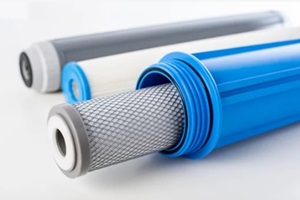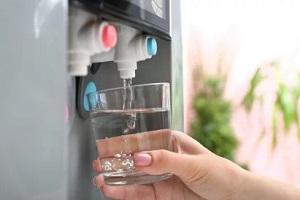 Germs and bacteria can contaminate tap water, creating a health risk for anyone who drinks it. Additionally, water treatment facilities often leave dangerous byproducts in the water, posing another health risk for children and adults.
Germs and bacteria can contaminate tap water, creating a health risk for anyone who drinks it. Additionally, water treatment facilities often leave dangerous byproducts in the water, posing another health risk for children and adults.
Due to the danger that stems from tap water, many people have turned to filtration systems for their homes and offices. These systems allow them to continue drinking tap water without worrying about becoming ill due to contamination.
Numerous options are available, with the reverse osmosis water filtration systems and carbon filters among the most popular. Both remove impurities from water, but they operate differently.
Learn more about these two filtration options and determine if you should use them separately or together.
Reverse Osmosis Water Filtration System
A reverse osmosis water filtration system uses high pressure to force water through a semipermeable membrane. The membrane removes contaminants to the molecular level, and the system disposes of them. The clean water is moved to a storage tank until you are ready for a drink.
This water filtration system excels at removing the following contaminants:
- Protozoa
- Bacteria
- Viruses
- Chemical contaminants
Reverse osmosis water filtration systems generally include three to five components, referred to as stages. Regardless of the number of stages, most systems share these key elements:
Sediment Filter
The sediment filter removes suspended matter from the water before it reaches the semi-permeable membrane. Without the filter, sediment will likely clog the system, slowing down the filtration process. Eventually, the deposits may cause the system to stop working.
Carbon Filter
Some systems have a single carbon filter after the sediment filter, while others have two carbon filters in place. In both cases, the carbon filter or filters remove chlorine and other chemicals that affect the water’s smell and taste. Additionally, filtering out these chemicals protects the semi-permeable membrane even further.
Semi-Permeable Membrane
 According to the EPA, drinking water should not contain more than 500 mg/L of total dissolved solids. Standard water filters allow most total dissolved solids to slip through, which is why many people are now using reverse osmosis water filtration systems.
According to the EPA, drinking water should not contain more than 500 mg/L of total dissolved solids. Standard water filters allow most total dissolved solids to slip through, which is why many people are now using reverse osmosis water filtration systems.
The semi-permeable membrane removes most total dissolved solids, ensuring your water supply is well within the EPA’s guidelines.
Carbon Polishing Filter
The polishing filter is the last stage in the process and removes any remaining unpleasant odors or tastes. While there are different types of carbon filters, many systems use a granular activated carbon filter for this stage.
Unlike the other stages that are completed in succession, the carbon polishing filter does not remove contaminants until the water leaves the storage tank on its way to the faucet. Thus, the water is filtered one more time before you take a drink.
Granular Activated Carbon Filters
Along with being part of reverse osmosis filtration systems, granular activated carbon filters are also used on their own. Granular activated carbon (GAC) filters are made from bituminous coal, peat, wood, and other raw materials, and the carbon is activated during manufacturing.
GAC filters are most effective at removing the following contaminants from drinking water:
- Volatile organic compounds
- Synthetic organic compounds
- Organic compounds with high molecular weights
Some of these chemicals impact the taste and smell of water, which is why granular activated carbon filters are effective polishing filters. However, granular activated carbon filters do not remove nitrate, iron, radionuclides, and most microbiological contaminants.
Thus, pairing a GAC filter with a reverse osmosis water filtration system is wise for the best results. That way, your system will remove dangerous contaminants while providing odor-free drinking water.
It’s also essential to replace your GAC filter as needed. Unlike reverse osmosis, which disposes of the contaminants, GAC filters hold onto the impurities.
This builds up over time and can eventually clog the system. Follow the manufacturer’s instructions to ensure you adhere to the guidelines when replacing your GAC filter.
Speed Of Filtering: Reverse Osmosis vs. Granular Activated Carbon Filters
 It takes longer for water to pass through a reverse osmosis filtration system than through a carbon filter. However, reverse osmosis systems include storage tanks to hold purified water.
It takes longer for water to pass through a reverse osmosis filtration system than through a carbon filter. However, reverse osmosis systems include storage tanks to hold purified water.
As long as the tank is full, you will not have to worry about waiting for the system to purify your water. Therefore, the longer filtration time is not an issue for most consumers.
Invest In a Reverse Osmosis Water Filtration System
If you want to improve the quality of your drinking water, Hawaiian Cool Water can help. Our team will work directly with you to determine what you want in a system, your budget, and other considerations. Contact Hawaiian Cool Water today to learn more about reverse osmosis water filtration systems and other options for purifying your drinking water.


